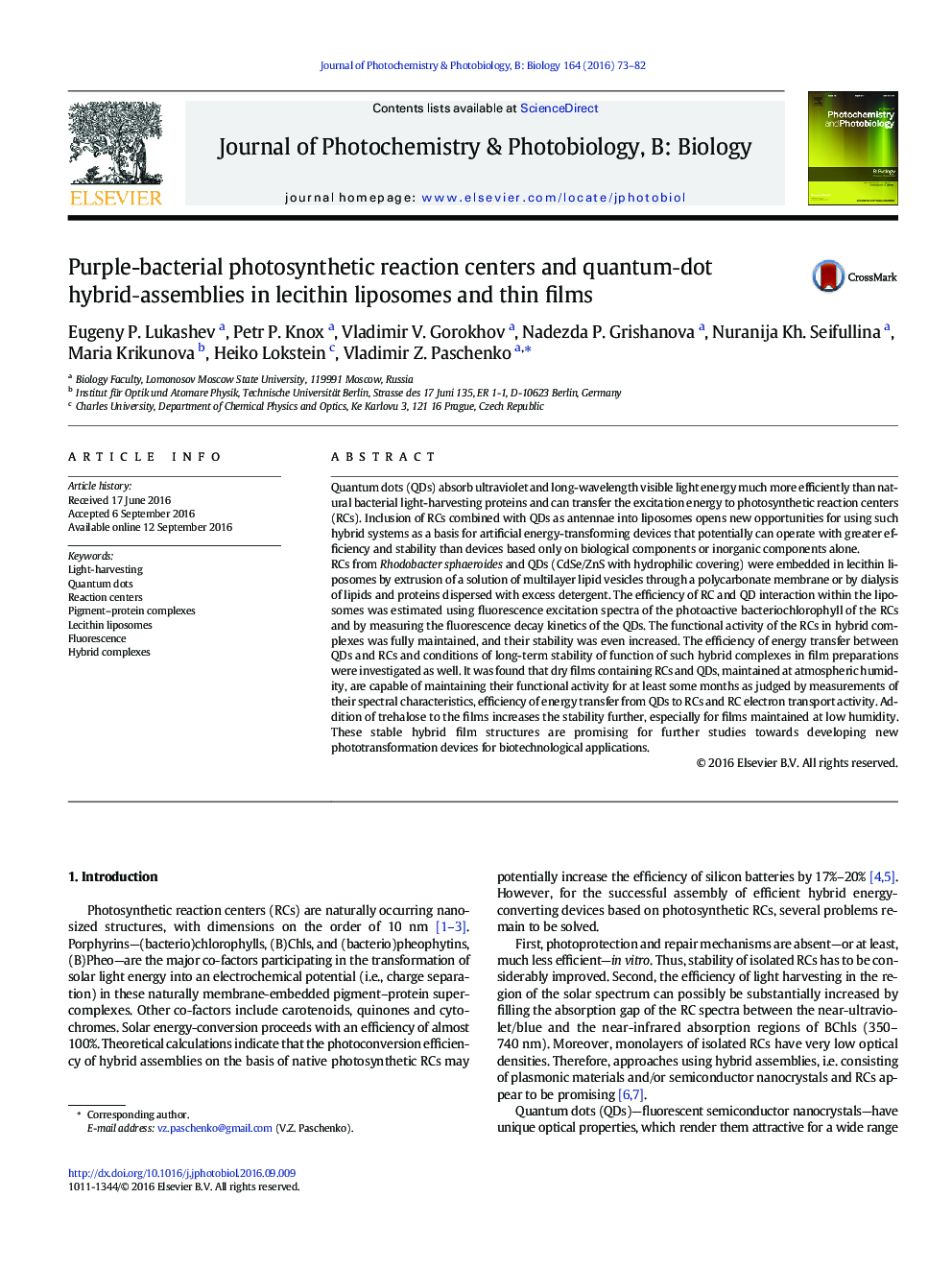| کد مقاله | کد نشریه | سال انتشار | مقاله انگلیسی | نسخه تمام متن |
|---|---|---|---|---|
| 4754604 | 1418069 | 2016 | 10 صفحه PDF | دانلود رایگان |

- The possibility has been shown to create stable hybrid RC/QD systems.
- QDs act as effective additional light-harvesting component in these hybrid systems.
- Reliable functional contact exists in the QD/RC complex in lipid bilayer structures.
- The liposomal surrounding provides the higher sustainability of the hybrid system.
Quantum dots (QDs) absorb ultraviolet and long-wavelength visible light energy much more efficiently than natural bacterial light-harvesting proteins and can transfer the excitation energy to photosynthetic reaction centers (RCs). Inclusion of RCs combined with QDs as antennae into liposomes opens new opportunities for using such hybrid systems as a basis for artificial energy-transforming devices that potentially can operate with greater efficiency and stability than devices based only on biological components or inorganic components alone.RCs from Rhodobacter sphaeroides and QDs (CdSe/ZnS with hydrophilic covering) were embedded in lecithin liposomes by extrusion of a solution of multilayer lipid vesicles through a polycarbonate membrane or by dialysis of lipids and proteins dispersed with excess detergent. The efficiency of RC and QD interaction within the liposomes was estimated using fluorescence excitation spectra of the photoactive bacteriochlorophyll of the RCs and by measuring the fluorescence decay kinetics of the QDs. The functional activity of the RCs in hybrid complexes was fully maintained, and their stability was even increased. The efficiency of energy transfer between QDs and RCs and conditions of long-term stability of function of such hybrid complexes in film preparations were investigated as well. It was found that dry films containing RCs and QDs, maintained at atmospheric humidity, are capable of maintaining their functional activity for at least some months as judged by measurements of their spectral characteristics, efficiency of energy transfer from QDs to RCs and RC electron transport activity. Addition of trehalose to the films increases the stability further, especially for films maintained at low humidity. These stable hybrid film structures are promising for further studies towards developing new phototransformation devices for biotechnological applications.
Journal: Journal of Photochemistry and Photobiology B: Biology - Volume 164, November 2016, Pages 73-82